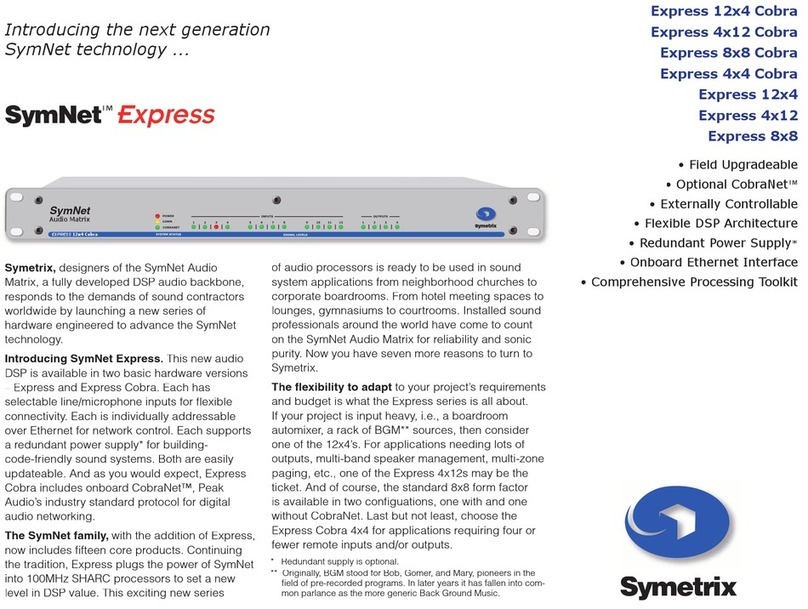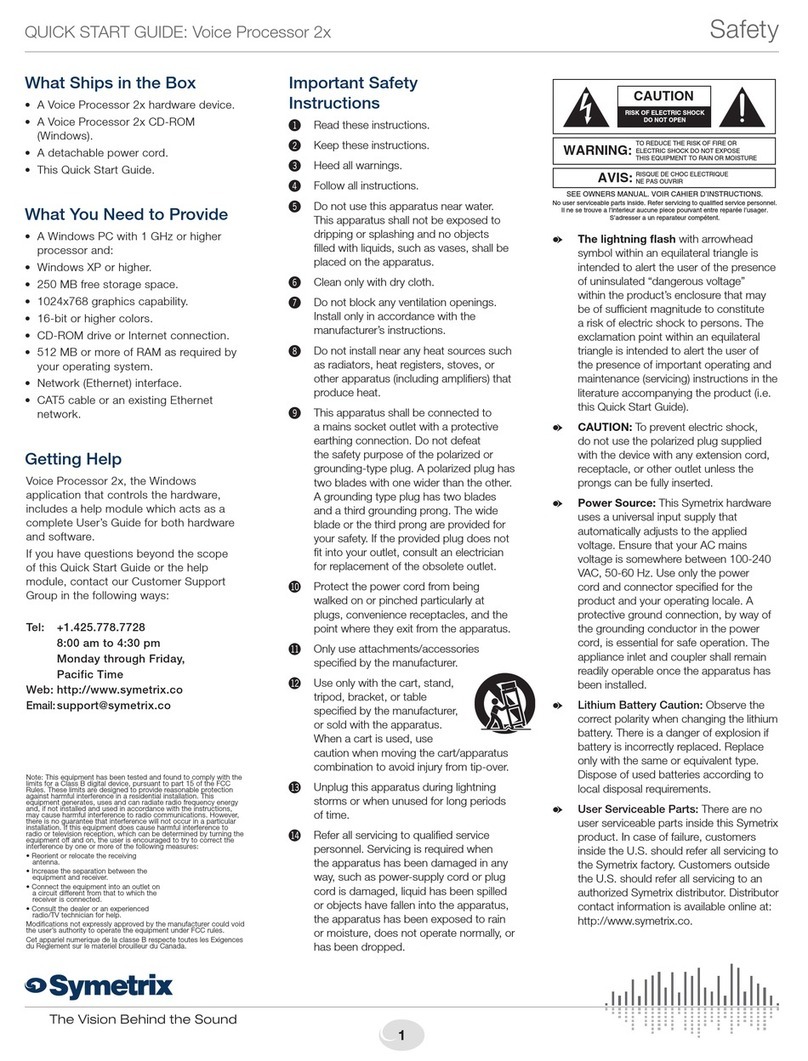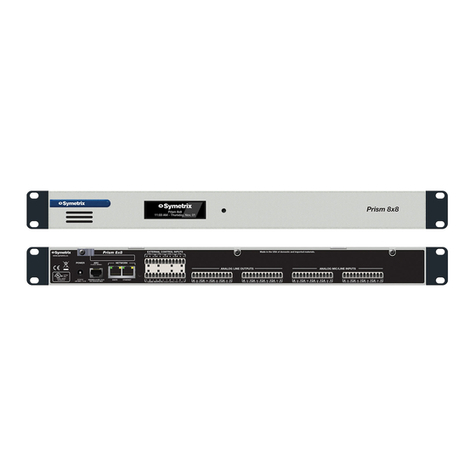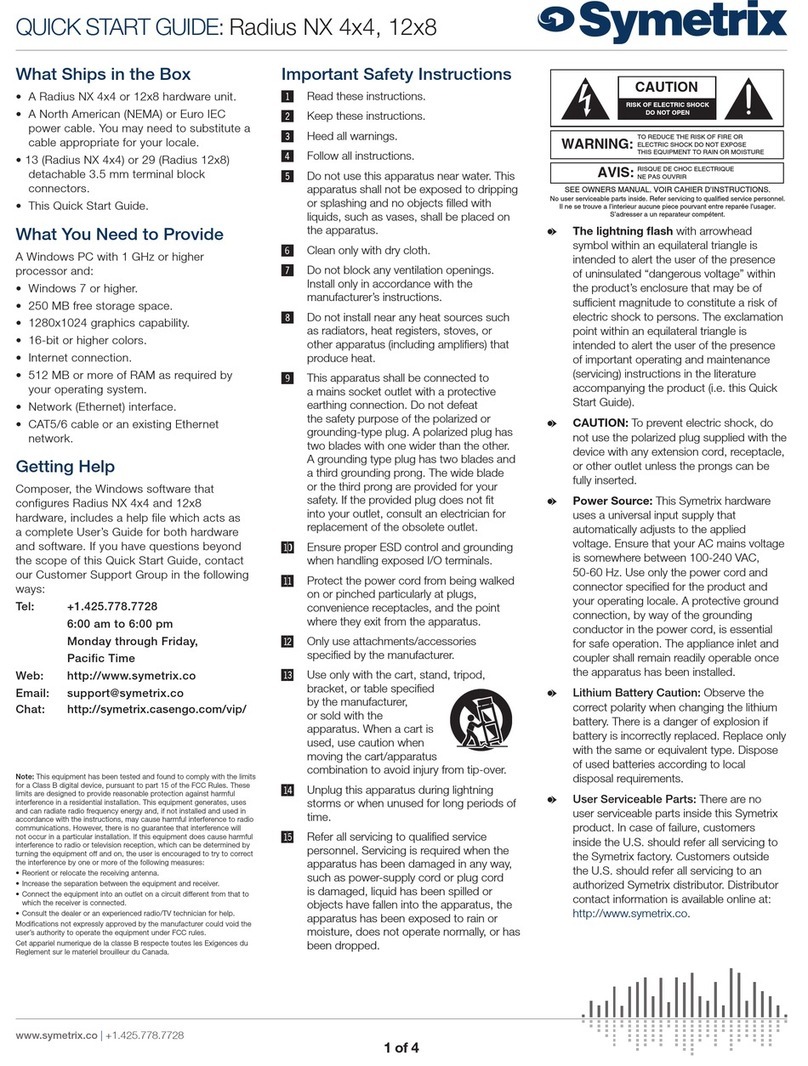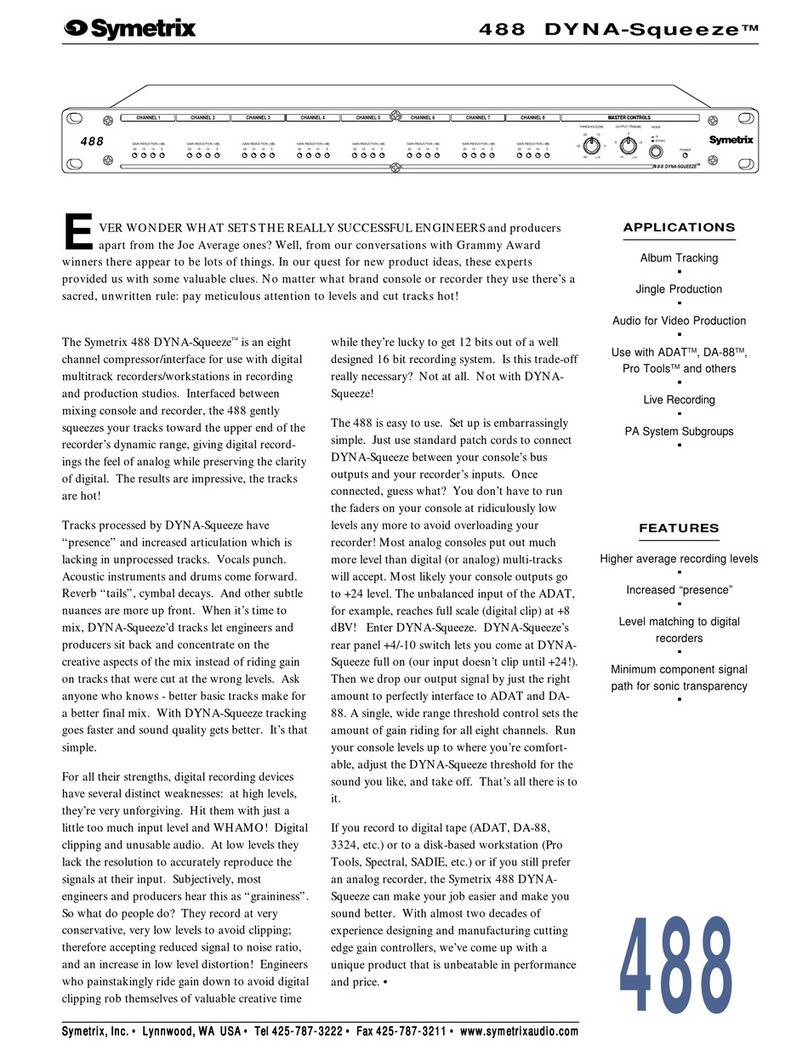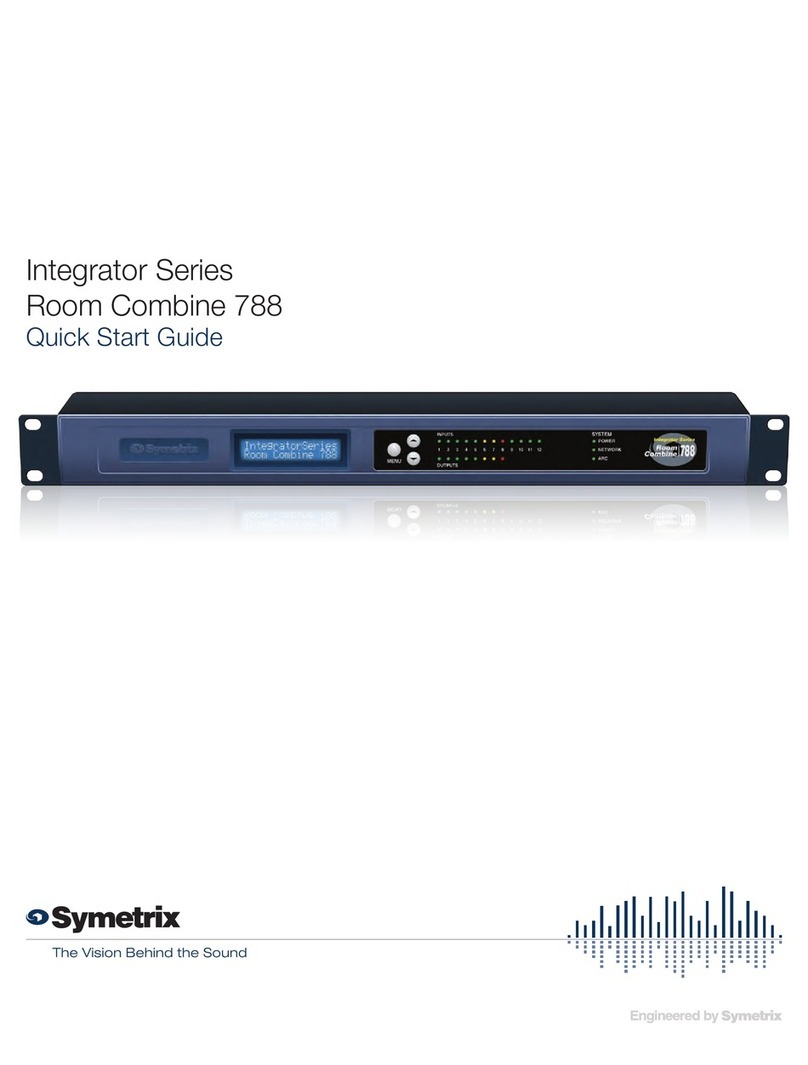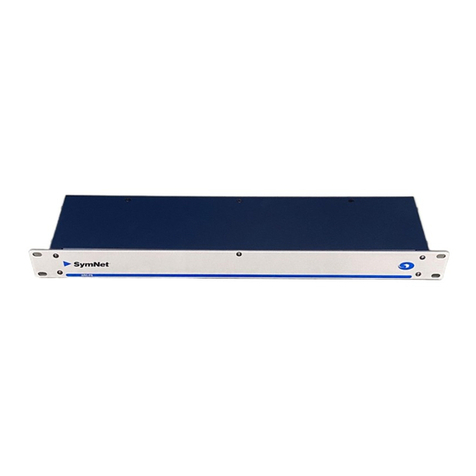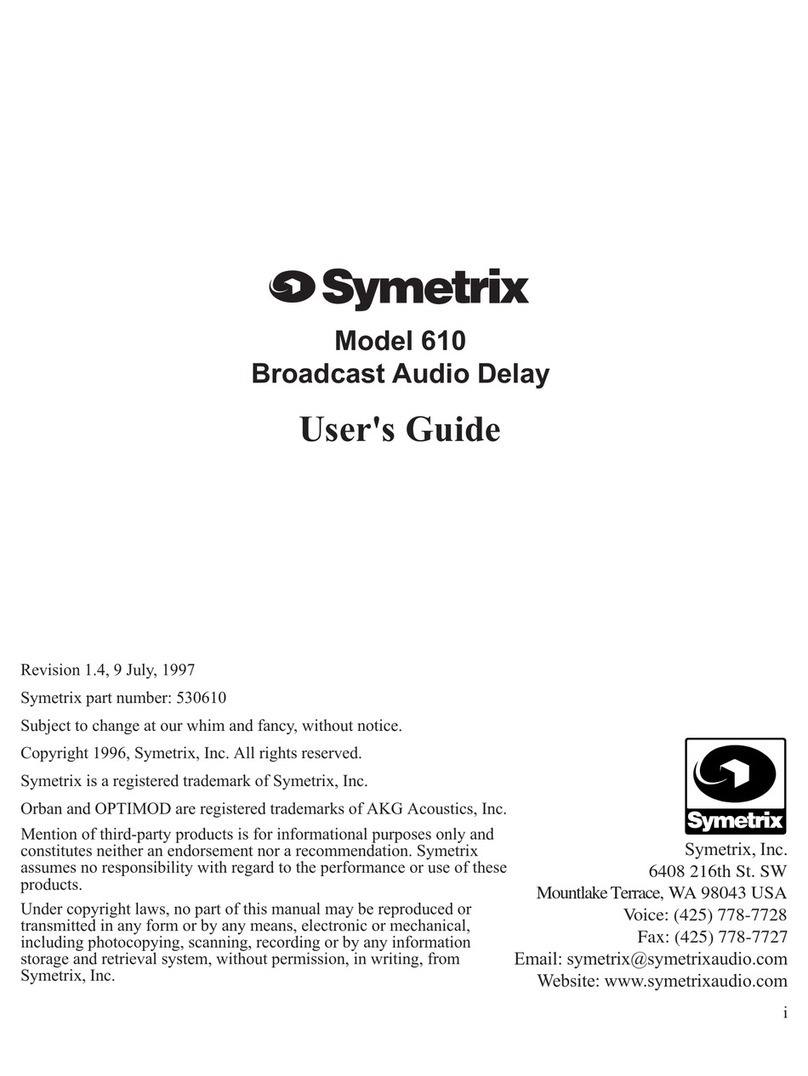
402
2
Operator Safety Summary Chapter 2
Terms
Several notational conventions are used in this
manual. Some paragraphs may use Note, Caution,
or Warning as a heading. Certain typefaces and
capitalization are used to identify certain words.
These are:
Note Identifies information that needs
extra emphasis. A Note generally
supplies extra information to help
you to better use the 402.
Caution Identifiesinformationthat,ifnot
heeded, may cause damage to the
402 or other equipment in your
system.
Warning Identifies information that, if
ignored, may be hazardous to your
health or that of others.
CAPITALS Controls, switches or other markings
on the 402’s chassis.
Boldface Strong emphasis.
Equipment Markings
AVIS:
NE PAS OUVRIR
Il ne se trouve a l’interieur aucune piece pourvant entre reparée l’usager.
SEE OWNERS MANUAL. VOIR CAHIER D’INSTRUCTIONS.
S’adresser a un reparateur compétent.
RISQUE DE CHOC ELECTRIQUE
o user serviceable parts inside. Refer servicing to qualified service personnel
CAUTION
WARNING:
TO REDUCE THE RISK OF FIRE OR
ELECTRIC SHOCK DO NOT EXPOSE
THIS EQUIPMENT TO RAIN OR MOISTURE
DO NOT OPEN
RISK OF ELECTRIC SHOCK
The lightning flash with arrowhead symbol within an
equilateral triangle is intended to alert the user of the
presence of uninsulated “dangerous voltage” within
the product’s enclosure that may be of sufficient
magnitude to constitute a risk of electric shock to
persons. The exclamation point within an equilateral
triangle is intended to alert the user of the presence of
importantoperating andmaintenance (servicing)
instructions in the literature accompanying the
product (i.e. this manual).
Caution To prevent electric shock, do not use the
polarized plug supplied with the unit with
any extension cord, receptacle, or other
outlet unless the blades can be fully
inserted.
ImportantSafetyInstructions
Please read and keep these instructions. Heed
and follow all warnings and instructions.
Install in accordance with the manufacturer’s
instructions.
Power Source This product is intended to
operate from a power source that does not apply
more than 250V rms between the power supply
conductors or between either power supply
conductor and ground. A protective ground
connection, by way of the grounding conductor
in the power cord, is essential for safe operation.
Grounding The chassis of this product is
grounded through the grounding conductor of
the power cord. To avoid electric shock, plug the
power cord into a properly wired receptacle
before making any connections to the product. A
protective ground connection, by way of the
grounding conductor in the power cord, is
essentialforsafeoperation.Donotdefeatthe
safetypurposeofthegroundingplug.The
grounding plug has two blades and a third
grounding prong. The third prong is provided for
your safety. When the provided plug does not fit
your outlet, consult an electrician for replacement
of the obsolete outlet.
DangerfromLossofGround Iftheprotective
ground connection is lost, all accessible conduc-
tive parts, including knobs and controls that may
appear to be insulated, can render an electric
shock.
ProperPowerCord Useonlythepowercord
and connector specified for the product and your
operating locale. Use only a cord that is in good
condition.Protectthepowercordfrombeing
walked on or pinched, particularly at plugs,
convenience receptacles, and the point where
they exit from the apparatus.
Proper Fuse The user accessible fuse is a part of
the IEC AC inlet connector. The fuseholder
accepts5x20mmdiameterfuses.For117VAC
operation,thecorrectvalueis0.2A,250VAC,
slowblowing.For230VACoperation,thecorrect
valueis0.1A,250VAC,slowblowing.
OperatingLocation Donotoperatethisequip-
mentunderanyofthefollowingconditions:
explosive atmospheres, in wet locations, in
inclementweather,improperorunknownAC
mainsvoltage, or if improperly fused.Do not
install near any heat source such as radiators,
heat registers, stoves, or other apparatus
(including amplifiers) that produce heat. Unplug
this apparatus during lightning storms or when
unused for long periods of time.
StayOut oftheBox Toavoidpersonal injury (or
worse), do not remove the product covers or
panels. Do not operate the product without the
covers and panels properly installed. Only use
accessories specified by the manufacturer. Clean
only with a damp cloth.
User-serviceableparts Therearenouser
serviceable parts inside the 402. In case of failure,
refer all servicing to the factory. Servicing is
required when the 402 has been damaged in any
way, such as when a power supply cord or plug
is damaged, liquid has been spilled or objects
have fallen into the apparatus, the apparatus has
been exposed to rain or moisture, does not
operate normally, or has been dropped.
